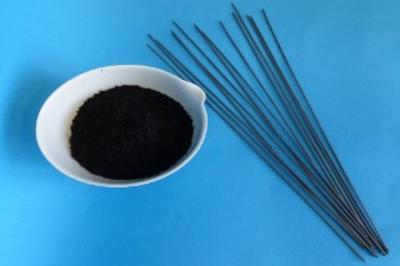Researchers at the Fraunhofer Institute for Interfacial Engineering and Biotechnology and the University of Stuttgart are aiming to use carbon dioxide as a raw material for the production of chemicals, using a process based on a new perovskite capillary membrane.
 The perovskite capillaries with a diameter of 2 mm and a wall thickness of 150 µm. Image by Fraunhofer
The perovskite capillaries with a diameter of 2 mm and a wall thickness of 150 µm. Image by Fraunhofer
In the project 'PiCK ' Plasma-Induced CO2 Conversion for the Storage of Renewable Energies', the researchers have been researching for two years a new approach that uses excess electricity from regenerative sources and combines plasma with membrane technology. The process splits CO2 into oxygen and the chemical base material carbon monoxide. The separation of oxygen is based on a perovskite capillary membrane, which is CO2-stable and permeable to oxygen at 1000°C.
To prevent CO from reacting back with the oxygen produced in the plasma to form CO2, oxygen must be constantly removed from the reaction equilibrium. For this purpose, Fraunhofer IGB has developed a new ceramic membrane that can selectively separate oxygen. 'Since the membrane must be temperature- and CO2-stable at the same time, we spin special ceramic materials, so-called perovskites, together with polymers into a thin-walled capillary,' explains Dr. Thomas Schiestel, membrane expert and project manager at Fraunhofer IGB. The resulting green fiber is sintered at high temperatures to form a dense ceramic capillary membrane. 'Our perovskite membrane is stable in a CO2 atmosphere and permeable for oxygen at temperatures of 800 to 1000°C, but not to carbon monoxide and carbon dioxide,' says the Fraunhofer researcher. Such a membrane has not previously been described.
Dr. Andreas Schulz, a researcher at the Institute of Interfacial Process Engineering and Plasma Technology at the University of Stuttgart, said: 'If electrons excited in the plasma collide with CO2 molecules, this causes CO2 to decompose into carbon monoxide and oxygen.'
The process could potentially help tackle the rising climate emergency, and be used wherever CO2 is produced in an enriched form, such as combustion processes in power plants, in the cement and glass industries, and in breweries where CO2 is a by-product of alcoholic fermentation. The use of CO2 as a raw material can therefore help conserve natural resources and protect the climate.
Both the process and the plasma membrane reactor can be easily scaled and flexibly controlled, which is a great advantage for technical implementation. The researchers are already looking for interested companies for the further development in a second finding phase and the subsequent technical implementation.